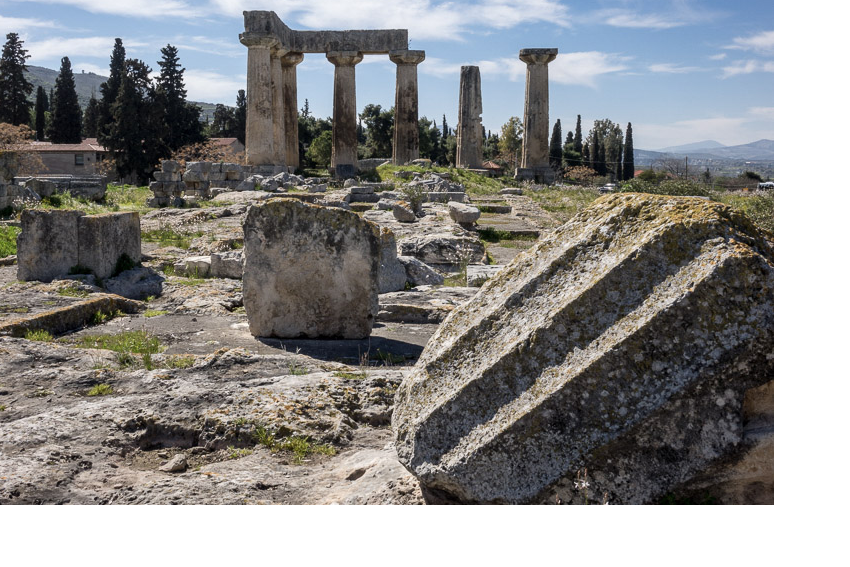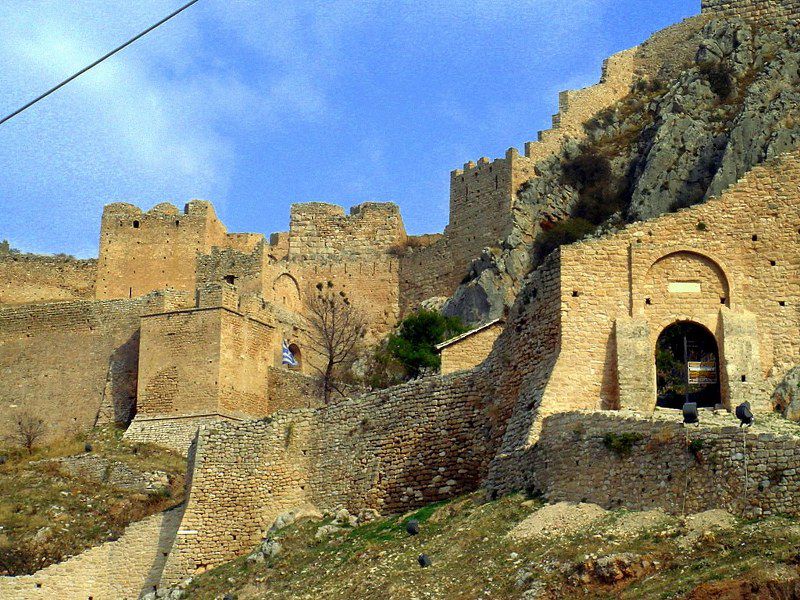MAY 2019
Our 2019 arrival in Athens coincided with yet another public holiday – 1st of May – Labour Day. The Greek Orthodox Easter was from Friday 26 April through to Easter Monday 29 April so in order to have a nice long Easter break the whole public service system went on strike for a couple of days. This meant reduced staff to clear us through Customs and no public buses or trains.
Our boat is on the hardstand near Corinth, an 85 km trip from the airport and I had booked a couple of nights accommodation at Acrocorinth to recover from the jet-lag and do a bit of sightseeing before turning up to the boatyard to start the dirty boat work. The train was a viable solution but now that was out it we had 2 options: taxi (+200 Euro) or hire a car – we choose option #2. Seven days car hire for EUR 244 but due to John’s misplaced Drivers Licence this meant I had to drive. Quite scary on the wrong side of the road plus coping with crazy Greek drivers, motorways with a 130 kmph speed limit and our VERY small Fiat Panda.
Our accommodation was great and just a short walk into a very quaint town, Acrocorinth, for our first Greek meal – Gyros and greek salad. The small town borders the Ancient site of original town completed with standing columns and overshadowed by the imposing Castle standing high on the nearby hill.
Acrocorinth is the ancient city of Corinth (Acro meaning ‘ancient’). This ancient city (BC700) has had much of it excavated from the 1800’s onwards and on the highest hill nearby is the ancient Castle which was an amazing find. Three sets of walls protected the inhabitants from invaders and the castle has it’s own fresh water spring allowing them to withstand many a siege.

View from our table overlooking the Ancient site 
Three walls of defence to get into the castle.
The isthmus of Corinth was strategically important for sea trade and in the past ships would be transported by land across the isthmus using wooden logs and many slaves to roll them the 6.5 km from the Aegean Sea to the Adriatic Sea thus avoiding a perilous rounding of the Peloponnese and saving 131 nautical miles plus weeks of hard sailing. Back in the late 1800’s it was decided to cut a canal through the isthmus and so we have the modern day Corinth Canal constructed during the 12 years between 1881 – 1893.

An incredible feat of engineering with the canal walls being 79 metres high and 24.6 metres wide. Due to the narrow confines and depth of only 8 metres transits of the canal are strictly controlled with barriers at either end and one way traffic only. It’s also quite expensive – at least EUR 200 for our 42 foot boat to transit. We plan to head that way next year so it was great to have had a look from a different perspective.